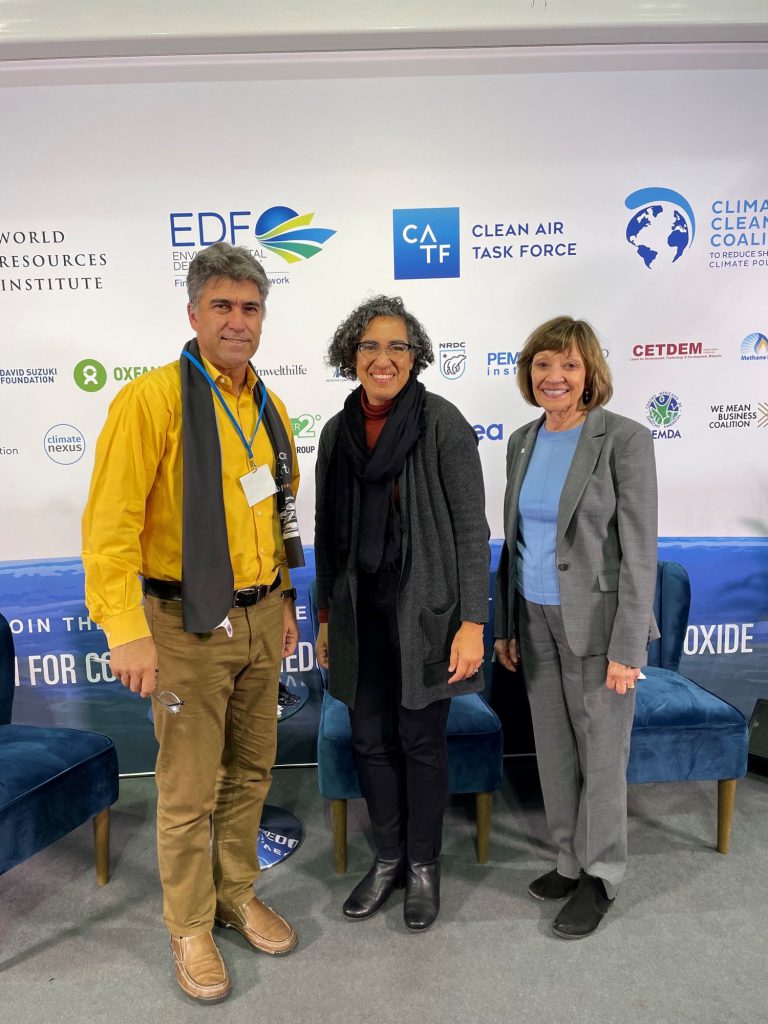
By Brad Hooker
Speaking last week at the Methane Pavilion at the UN Climate Conference, Air Resources Board Chair Liane Randolph and CDFA Secretary Karen Ross discussed the state’s methane goals. California is the only jurisdiction in the world that has a law to reduce short-lived climate pollutants, according to Jorge Daniel Taillant, director of the Center for Human Rights and Environment, an Argentina-based NGO.
The Newsom administration is working with NASA’s Jet Propulsion Laboratory on a methane satellite to spot “the worst actors,” explained Randolph. The regulatory agencies will use that to “take action” and inform new and existing policies.
Ross attributed the success in reducing emissions to the voluntary approach incorporated into the SB 1383 framework, along with cap-and-trade investments for incentives grants.
“Really the magic here is the low-carbon fuel standard,” said Ross. “It’s very powerful if we can rededicate [the emissions] to replacing fossil fuels.” The most challenging area, she explained, is enteric emissions from cows, since no “magic solutions” exist yet.
Ross added that—contrary to outcry from environmental justice groups—data has not shown that dairy digesters are leading to increased cow numbers and more air pollution. Having a large number of cows in condensed areas, she explained, means the state’s dairies have the smallest environmental footprint for every gallon of milk produced.
She stressed that the Newsom and Brown administrations have made significant investments in bringing community-based organizations to the table as “trusted messengers” for hard-to-reach communities.


